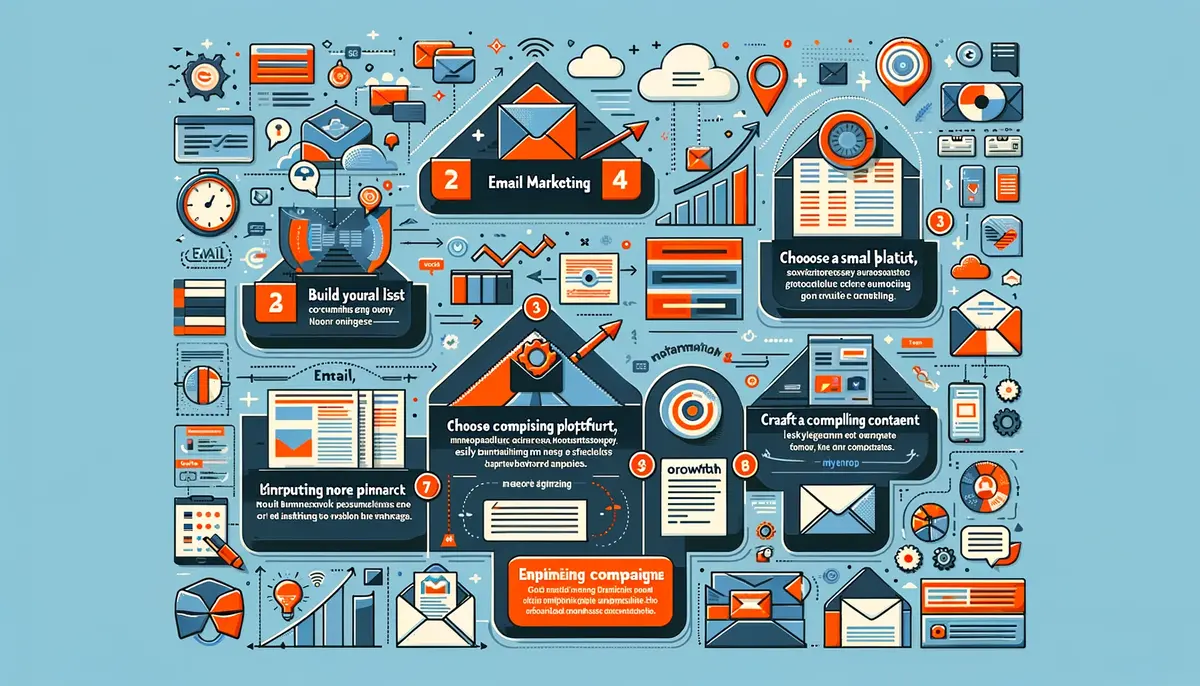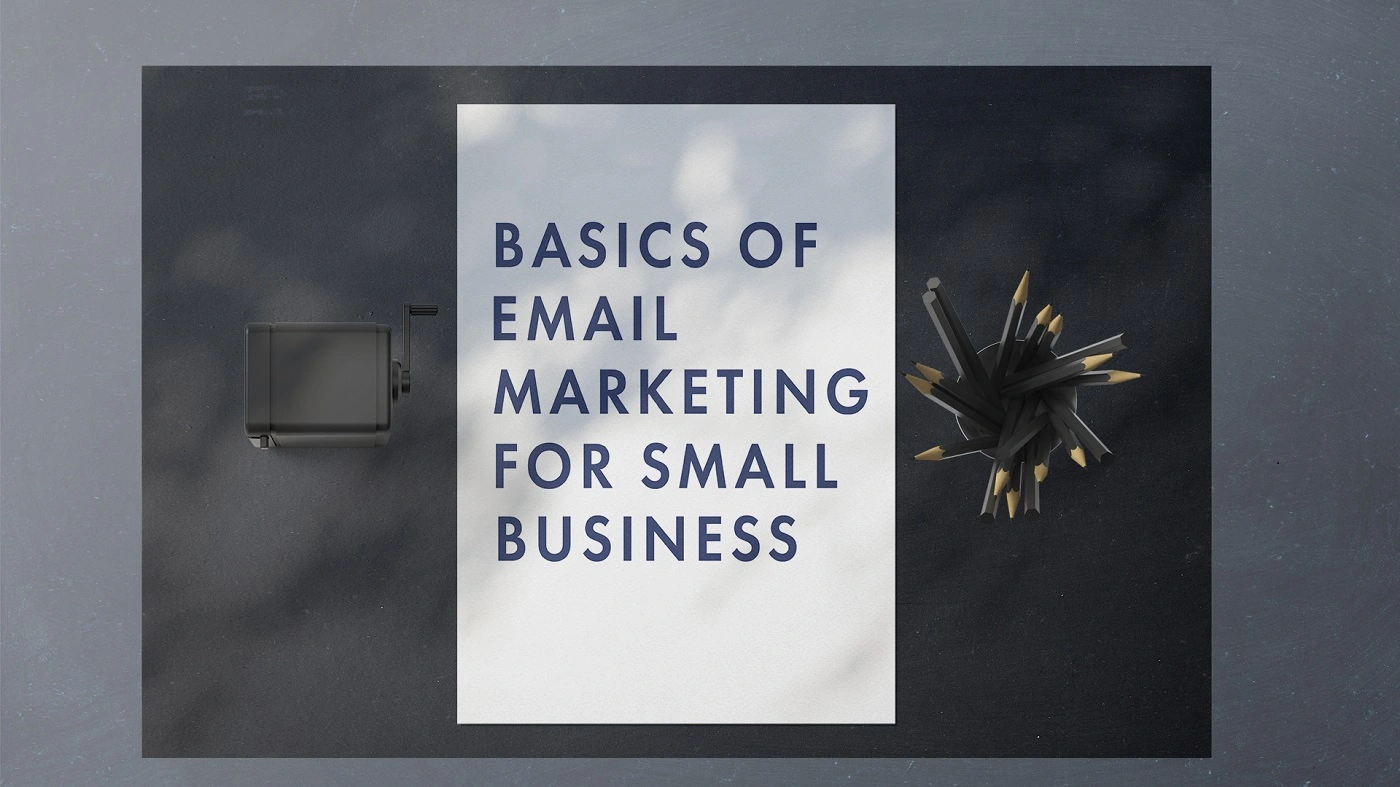[Email Marketing for Small Businesses: How to Build and Nurture Your List]

Executive Summary

Email marketing remains a powerful tool for small businesses, offering a high return on investment compared to other marketing channels. This comprehensive guide will equip you with the knowledge and strategies to effectively build a targeted email list and nurture those subscribers into loyal customers. We’ll delve into the essential steps of creating compelling email content, leveraging automation, and analyzing your results to optimize your campaigns for maximum impact. By following these strategies, you can transform your email marketing from a simple newsletter to a robust customer relationship management system that drives sales and strengthens brand loyalty. This guide isn’t just about sending emails; it’s about building meaningful relationships that lead to sustainable growth.

Introduction
In today’s digital landscape, email marketing stands out as a remarkably effective way for small businesses to connect with their target audience. Unlike fleeting social media posts or ephemeral ads, emails offer a direct line of communication, allowing you to nurture leads, build brand loyalty, and ultimately, drive sales. This guide will walk you through the process of creating a successful email marketing strategy, from building your list to analyzing your results. Whether you’re a seasoned entrepreneur or just starting out, this comprehensive approach will provide the tools you need to achieve significant growth using email marketing.
Frequently Asked Questions (FAQs)
-
Q: How do I collect email addresses ethically and legally?
A: Always obtain explicit consent. Clearly state your privacy policy and how you’ll use subscriber data. Offer valuable incentives for sign-ups, but avoid deceptive practices. Comply with all relevant regulations like GDPR and CAN-SPAM.
-
Q: What kind of email content resonates best with customers?
A: Focus on providing value. Share helpful tips, exclusive offers, behind-the-scenes glimpses, and stories that connect with your audience emotionally. Personalization is key; segment your list and tailor content to specific interests.
-
Q: How often should I send emails to my subscribers?
A: There’s no magic number. Find the right balance. Too many emails can lead to unsubscribes, while too few might mean missed opportunities. Start with a testing phase and analyze open and click-through rates to optimize frequency.
Building Your Email List
Building a robust email list is the cornerstone of successful email marketing. It’s not about quantity alone, but about gathering a targeted audience of individuals genuinely interested in your products or services.
- Lead Magnets: Offer valuable free resources (e.g., ebooks, checklists, webinars) in exchange for email addresses. These incentivize sign-ups and ensure a qualified audience.
- Website Forms: Integrate strategically placed signup forms on your website, making it easy for visitors to subscribe. A/B test different form designs and placements to optimize conversions.
- Social Media Integration: Promote your email list on your social media channels, offering exclusive content or discounts to subscribers. Use visually appealing graphics and compelling calls to action.
- Contests and Giveaways: Run contests or giveaways that require email sign-ups for participation. This can generate significant list growth, but ensure compliance with regulations.
- Strategic Partnerships: Collaborate with complementary businesses to cross-promote your email lists, expanding your reach to new, relevant audiences.
- Pop-up Forms (Used Strategically): While often criticized, pop-up forms can be effective if implemented thoughtfully. Use them sparingly and only when the timing and context are appropriate, avoiding intrusive or annoying experiences for users.
Crafting Compelling Email Content
Your email content is crucial; it’s the bridge between you and your audience. High-quality, engaging emails build relationships and drive conversions.
- Personalization: Use subscriber names and tailor content to their interests based on segmentation. Personalized emails significantly increase engagement rates.
- Storytelling: Connect with readers on an emotional level by sharing your brand’s story, customer success stories, or relatable anecdotes.
- Clear Call to Action (CTA): Every email should have a clear, concise call to action, guiding readers towards the desired outcome (e.g., making a purchase, visiting your website, downloading a resource).
- Mobile Optimization: Ensure your emails are easily readable on all devices. Use responsive design to adapt to different screen sizes.
- Visual Appeal: Use images, videos, and other visual elements to make your emails more engaging and memorable, but ensure they are optimized for fast loading.
- A/B Testing: Continuously test different subject lines, email content, and CTAs to see what resonates best with your audience. This iterative process is key to optimization.
Leveraging Email Automation
Email automation streamlines your workflow and maximizes efficiency. It allows you to send targeted, personalized emails at scale, without manual intervention.
- Welcome Sequences: Greet new subscribers with a series of automated emails introducing your brand, offering valuable content, and building anticipation.
- Abandoned Cart Emails: Remind customers who left items in their online shopping cart to complete their purchase. These emails often have a high conversion rate.
- Post-Purchase Follow-Ups: Send automated emails after a purchase, thanking customers, offering support, and suggesting related products.
- Win-Back Campaigns: Reach out to inactive subscribers with targeted emails, offering incentives to re-engage them.
- Birthday Emails: Send personalized birthday wishes and offers, fostering a sense of connection and loyalty.
- Segmented Campaigns: Automate email campaigns based on customer segments, tailoring content to specific interests and behaviors for enhanced relevance.
Analyzing and Optimizing Your Campaigns
Data-driven decision-making is essential for successful email marketing. Regularly analyze your results to identify what’s working and what needs improvement.
- Open Rates: Track the percentage of subscribers who opened your emails. This helps assess subject line effectiveness and overall email relevance.
- Click-Through Rates (CTR): Measure the percentage of recipients who clicked on links within your emails. Analyze which links receive the most clicks to optimize content and calls to action.
- Conversion Rates: Monitor the percentage of subscribers who completed desired actions (e.g., made a purchase, signed up for a webinar). This is a key indicator of campaign success.
- Unsubscribe Rates: Track the number of subscribers who unsubscribe from your list. High unsubscribe rates indicate problems with content or email frequency. Analyze reasons for unsubscribes to address underlying issues.
- A/B Testing Results: Analyze data from A/B tests to identify which email variations perform better. This helps refine your strategies over time.
- Email Deliverability: Ensure your emails are reaching your subscribers’ inboxes, not being filtered as spam. Regularly check your email deliverability rate.
Nurturing Your Email List
Beyond simply collecting email addresses, nurturing your subscribers through consistent and valuable communication builds strong relationships.
- Provide Consistent Value: Regularly deliver engaging and relevant content that addresses your subscribers’ needs and interests.
- Segment Your Audience: Divide your list into smaller, more targeted groups based on demographics, interests, or purchase history. This allows you to send more relevant and personalized messages.
- Use a CRM: A Customer Relationship Management (CRM) system can help you organize and manage your subscribers’ information, track their interactions, and personalize your communication.
- Run Promotions and Sales: Offer exclusive deals and discounts to your email subscribers to encourage purchases and increase customer lifetime value.
- Engage in Two-Way Communication: Encourage subscribers to reply to your emails, creating opportunities for dialogue and building a sense of community.
- Ask for Feedback: Regularly solicit feedback from your subscribers to understand their needs and preferences, enabling you to tailor your content and offers more effectively.
Conclusion
Email marketing offers unparalleled opportunities for small businesses to connect, engage, and convert their audience. By implementing the strategies outlined in this guide – from building a targeted email list to crafting compelling content and leveraging automation – you can transform your email marketing from a simple communication tool into a powerful engine for growth. Remember, it’s a marathon, not a sprint. Consistent effort, data-driven optimization, and a focus on building meaningful relationships are the keys to long-term success in email marketing. Don’t underestimate the power of this enduring digital marketing channel to foster loyalty and drive sustainable business growth. Embrace the strategies, and watch your email marketing generate impressive returns.
Keyword Tags
Email Marketing, Small Business, Email List Building, Email Automation, Email Marketing Strategy




